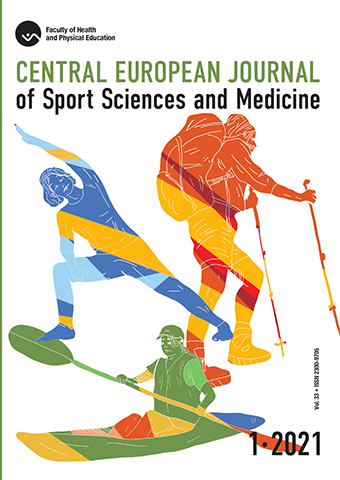
ISSN: 2300-9705
eISSN: 2353-2807
OAI
DOI: 10.18276/cej.2021.1-12




Issue archive /
Vol. 33, No. 1/2021
Determinants of Assault on Football League Referees during Competitions in Nigeria
| Authors: |
Danjuma Moudu
Momoh

Department of Human Kinetics and Health Education, Faculty of Education, Adekunle Ajasin University, Akungba-Akoko, Ondo State, Nigeria Toyosi Olaseyo Department of Human Kinetics and Health Education, Faculty of Education, Adekunle Ajasin University, Akungba-Akoko, Ondo State, Nigeria |
| Keywords: | assault competition football professionalism violence |
| Data publikacji całości: | 2021 |
| Page range: | 7 (127-133) |
Abstract
The assault on referees is an act committed by an individual involved in a match such as players, substitutes, coaches, team officials or spectators against a referee that is of a violent or intimidating nature. This study, therefore, investigated the level of assault of referees in Nigeria’s Premier Football League. The participants for the study consisted of two hundred and fifty (250) Nigerian Premier League elite referees, footballers, coaches, and spectators. The purposive sampling technique was used for the study to select the respondents. Sampled used for the study was survey research design. A structured questionnaire with validated and reliability value of 0. 75 was used for data collection. The data was analyzed using the inferential statistics of Chi-square (x2) to test the research questions and hypotheses at 0.05 alpha levels. The three hypotheses of officiating, organization of the league and win at all cost tested, were all rejected. Consequently, some recommendations were made based on the findings of the study.
Download file
Article file
Bibliography
| 1. | Akanji, J.J. (2009). The League for the highest bidder. Weekend Soccer Star, 14.03.09.Arun, S. (2004). Game, Set and Client Match. Media Asia, May 9, 28–29. |
| 2. | Balch, M.C., Scott, D. (2007). Contrary to popular belief refs are people too. Personality and perceptions of officials. Journal of Sport Behaviour, 30 (1), 3–20. |
| 3. | Baldwin, C. (2005). Field Research Notes. Sydney.Collina, P. (2003). The rules of the game. London: Macmillan. |
| 4. | Evans, R., Rowe, M. (2002). For club and country: Taking Football Disorder Abroad. Journal of Soccer and Society, 3 (1), 37–53. |
| 5. | Ibitoye, S. (2019). Violence erupts in Lagos as Kano Pillars fans invade the pitch, attack referee. Genesis Media online (10.04.2020). |
| 6. | Idowu, N. (2009). Problem of Sport Federations. Retrieved from: www.playthegame.org. |
| 7. | Inoyo, J. (2011). Laws of the game. Nigeria Football Referees Magazine, June, 16 –17. |
| 8. | Inoyo, J. (2011). The Role of Psychology in Refereeing. Nigeria Football Referees Magazine, 24–28. |
| 9. | Ishola, W. (2009). Corruption bane of sport development in Nigeria. Retrieved from: www.nigeriamuse.com (10.10.2017). |
| 10. | Morrison, E. (2002) Football union elite referee development manager. Paper presented at inaugural elite referee union conference, Huddersfield, UK. |
| 11. | Nigeria Football Association (1995). Annual general meeting year guide. Lagos.Nigeria Punch (2019). Attacks on football referees, inimical. |
| 12. | Nigeria Punch online (accessed on 20.03.2020). |
| 13. | Olaniyan, O. (2011). Communication in refereeing before, during and after the match. Nigeria Football Referees Magazine, 14 –15. |
| 14. | Rainey, D., Hardy, L. (1999). Sources of Stress, burnout and intention to terminate among referees. Journal of Sports Sciences, 17, 797– 806. |
| 15. | Reilly, T., Gregson, W. (2005). Special populations: The referee and assistant referee. Journal of Sports Sciences, 24 (7), 795–801. |
| 16. | Smith, R. (2003). Towards acognitive - affective model of athletic burnout. Journal of sport psychology, 8, 36–50. |
| 17. | Weinstein, M. (2003). Physiological load imposed on elite soccer referees during actual match play. Journal of Sports Medicine and Physical Fitness, 41 (1), 27–32. |
| 18. | Wolfson, S., Neave, N. (2007). Coping under pressure. cognitive strategies for maintaining confidence among soccer referees. Journal of Sports Behaviour, 30 (2), 232–247. |